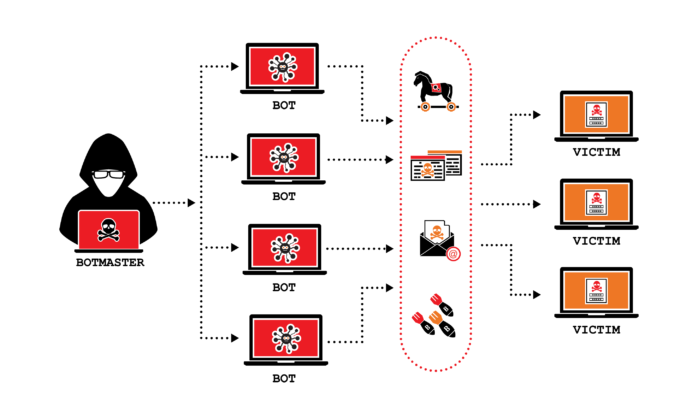No products in the cart.
DDoS attack, Distributed Denial of Service Attack (DDoS), is an attack that sends a large number of malicious requests to a target server by controlling a large number of botnets to exhaust the resources of the target server. Its main feature is that the source of the attack is spread all over the world, and it is difficult to stop it by blocking a certain IP, and secondly, DDOS can take advantage of a variety of protocol loopholes and camouflage normal requests, which cannot be recognized by traditional firewalls at all.

Local Defense
Local defense blood medicine installation of special network equipment, including hardware and software, can be installed by themselves, or installed by the service provider, local defense needs to rely on large telecommunications carriers, and carriers to provide protection.
Cloud Defense
Cloud defense is the choice of most companies, through the choice of CDN service providers, CDN service providers to provide website protection, and provide technical support, the current international well-known CDN service providers suitable for small and medium-sized enterprises such as Cloudflare, CDN5, Stonecdn, etc., the enterprise can choose the appropriate cdn service providers according to their actual needs.
Hybrid Solution
A hybrid solution is a set of local solutions and a subscription to an anti-DDoS cloud service that automatically connects when an attack begins. The hybrid approach eliminates the attack volume limitations of local solutions and leverages the benefits of both cloud and local solutions. Hybrid solutions are suitable for large organizations that focus on engaging with customers through online channels.
With more than 8 years of experience in network security protection, 3 core operation centers around the world, and the largest number of data nodes in Asia and Africa, CDN5 is the CDN service provider that understands the Chinese market the most, and the team members are all from China and the local Chinese, which can provide the best localized support.
Enquire NowWith its global self-built and cooperative operation centers, CDN5 is able to fully automate traffic cleaning through AI model deep learning, which can be directly ignored for T-level attacks.
Intelligent scheduling center through DNS export IP positioning and EDNS protocol extension technology, real-time analysis of the user's geographic location and network environment to achieve the nearby distribution, Hong Kong node new CN2/BGP hybrid architecture design, mainland China access latency <30ms, no difference with the local server room.
The service team members are all from China and local Chinese, fluent in English, familiar with the Chinese market and business logic, 24/7 technical online, support a variety of instant messaging communication, can provide more efficient after-sales support.
Choose your plan. Change at any time. Upgrade your plan for the difference in price only!

Protect for testing

Advanced project

Business version

Customized Version
Can DDoS attacks be prevented?
While you can't completely stop a DDoS attack against your organization, you can implement robust protection measures to minimize its impact. A comprehensive DDoS protection strategy combines traffic monitoring, rate limiting, attack detection systems, and incident response plans. When properly implemented, these measures can shut down attack vectors while also identifying and mitigating attacks before they cause significant damage to your service.
Can firewalls stop DDoS attacks?
Traditional firewalls alone cannot effectively stop DDoS attacks.While Web Application Firewalls (WAFs) can help filter some malicious traffic, they were not designed to handle the scale and complexity of modern DDoS attacks. During a DDoS attack, firewalls are often overwhelmed by the volume of traffic and can even become bottlenecks, making the impact of the attack even worse. Effective DDoS protection requires specialized solutions that can analyze traffic patterns and behavior at scale.
How to deal with hybrid DDoS attacks?
It is necessary to adopt a layered protection architecture, with network layer defense dispersing attack traffic through BGP Anycast technology to clean protocol attacks such as SYN Flood, application layer configuring waf firewall to block regular attacks such as HTTP Flood, and finally utilizing CDN5's AI model to analyze user behavior in real time and quickly intervene in the process.